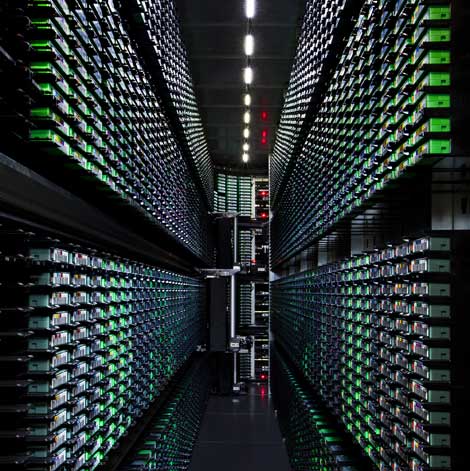Robotics in data centers: prospects and problems

Nowadays, many areas of life and production are robotic. Until recently, the concepts of “smart home”, “robot vacuum cleaner” and others were only fiction, now all this has become part of our reality. There is no need to talk about production - robotic devices have long replaced workers in most cycles of creating any things.
And what will robotization give to a data center? It turns out that the advantages of using robots in DCs can be quite a lot. By the way, some companies already use robots in their data centers. For example, IBM modified the iRobot robot vacuum cleaner in order to create a “mobile post” for measuring temperature and humidity in its DCs, receiving real-time data.
But the possibilities for data center robots open up much more if you carefully consider some aspects.
There are companies, for example, DevLinks LTD, which are engaged in the creation of systems for automating the data center. The specialists of this company can tell a lot about the prospects of DC robotics, and this opinion is worth considering.
The easiest way to use robots in DCs, for example, is to use robots as errand boys - for the quick delivery of hard drives, blade servers and other necessary nodes and elements for replacement. In order to facilitate the recognition by robots of all equipment and devices, it is worth using RFID tags, i.e., RFID tags.
What might a robotic data center look like?
Most likely, in such rooms a place will be allocated for moving robots, for example, special rails are laid so that robots can get to the most remote room of the data center. In addition, the vertical structure of the DC will be used, as in some modern book depositories with a robotic book delivery system.
The vertical structure of equipment placement really makes sense if you use robots to service such equipment. “Cognex-type projects will help you take pictures of various devices, read barcodes, work with RFID tags and perform other tasks that usually lie on the shoulders of the DC team,” says DevLinks chief programmer.
Already, companies such as Google, IBM, Amazon, AOL are actively working on the creation of robotic data centers. As for AOL, this company presented its project back in 2011, and since then it has been working quite successfully.

At Google, in some of the company's DCs, robots control the loading and unloading of tape drives, which are needed when restoring certain data arrays.
Lower operating costs
Of course, the cost of operating robotics in DCs will now be quite high. However, the more popular and widespread such systems are, the cheaper they will be. In addition, technology is constantly evolving, not least, in the direction of cheaper robot systems.
We can hope that in a few years the robotic data centers will show operating costs not slightly higher than ordinary data centers.
DC of a new type
If you imagine an ideal robotic DC, then it will be a room with a vertical structure, with a different temperature and lighting control system (lighting in such DCs will not be necessary at all, because the machines will work, not the service teams). One human operator will be able to manage huge arrays of equipment, monitoring the quality of work of robots, and intervene only in very critical situations.
Of course, robots will not be able to completely replace service teams, but they are quite capable of taking on routine work, which takes valuable employees time.
The main advantages of using robots in the DC
Vertical structure of the machine rooms, which automatically means a more efficient use of the space of the DC.
Lower lighting costs. Yes, many types of robots practically do not need the level of lighting that is necessary for humans. And this will reduce the cost of creating and operating lighting systems that are needed only for humans.
Reducing the likelihood of equipment failure. When automatic machines will monitor everything, then, subject to a normal project and its implementation, the risks of equipment failure will be reduced, since the so-called “human factor” will be less. Automata will be able to calculate the probability of equipment failure, or quickly fix / replace the problem node.
Effective investment. In the long term, investing in robotic DCs will be very profitable. In the short term, all this will require significant costs, but in the long term, everything will pay off.
Problems and disadvantages The
need to create a new type of DC. This can be called a problem because the creation of a new DC project is a technically difficult task, and because all this requires a lot of investment. Most likely, it will not work to convert an existing DC into an automated one - you will have to build everything in a new way.
Creating a new type of equipment. Robots will work with a different type of equipment than humans, and the creation of such equipment is the task of both manufacturers and creators of DCs.
Big expenses. This has already been said, however, it is worth repeating. At first, you will have to invest a lot of money to create a brand new platform. As a result, all this should pay off, but investments will be needed, and considerable.
When will all this happen and companies will build robotic data centers? According to experts, "robotization" will occur very actively over the next five to seven years.
Via datacenterknowledge
